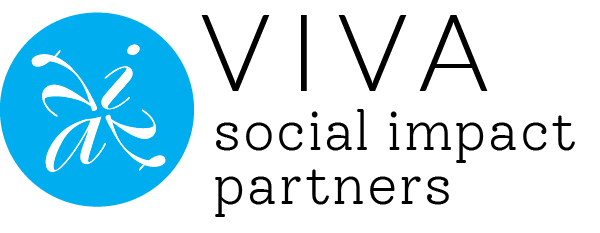3 min read
Data for Impact: Three Ways Organizations Can Leverage Data to Support Racial Equity Efforts
Laura Bowen
July 1, 2020
Blog

At VIVA, supporting our partners in addressing the needs of diverse communities has been a driving goal since we were founded 9 years ago. We are committed to working in partnership to fix systems that are broken.
During this momentous time, people and organizations are taking an especially close look at how their actions and efforts can be anti-racist. Listed below are three things your organization can do now to use data and analytics to help ensure that your work is supporting racial equity.
- Update (or create!) your organization’s Theory of Change
As they say, “what gets measured, gets managed.” An organization’s Theory of Change (also referred to as a Logic Model) is a framework that lays out the long-term impact an organization is striving for, specifies what the organization should do to make progress toward that impact, and identifies the outputs and outcomes that an organization can measure as it works toward its impact goals. Review your Theory of Change. Is combating racism and advancing racial equity explicitly called out? Bolstering an existing Theory of Change — or developing one for the first time — to clearly specify racial equity goals and activities is an important step in being able to manage and measure your efforts. VIVA recently worked with a partner to update their Theory of Change, reviewing each of their goal areas and explicitly stating where racial equity-focused work falls. VIVA helped determine specific activities to drive racial equity work and goals, as well as an approach to measure progress. Having measurable goals focused on racial equity is enabling our partner to better develop programming and processes to ensure progress in this important area. - Visualize your reach — and opportunities for further efforts — with data/GIS maps
While charts, graphs, and tables can be a valuable way to capture quantitative information, merging numbers with visuals can be a powerful way to unlock insights. Do you have a clear understanding of the areas and populations of most need within your geographic reach? Do you make funding/investment, programming, and other decisions based on advancing equity among high need areas and populations? VIVA is working with a partner to highlight geographic boundaries (e.g. counties, zip codes, census tracts) that fit certain criteria – for example, a high percentage of children of color living under the poverty line — as part of their local needs assessment work. We then layer that initial heat map with client data regarding programming offerings, physical site locations, etc. to show them how their existing offerings are serving communities most in need. These maps are valuable tools in facilitating discussions regarding needs assessments and funding priorities. An example of an interactive heat map that VIVA created showing income equity of households with children ages 3, 4, and 5 — including race/ethnicity data — is included below. Hover over the map with your mouse to see the county name and corresponding data on income level of households with children, as well as select child race/ethnicity data. - Conduct partnership network analysis to ensure you have strong relationships with key partners who work in Black communities and communities of color

Partnerships are critical to ensuring that funding and assistance effectively reaches and supports priority communities. Working with the right partners can ensure that your organization is operating to best address cultural and racial equity needs. Do you feel like your organization has a good understanding of the breadth of your partnerships across key focus areas, as well as the strength of these partnerships? Are your partnerships advancing your racial equity goals (see item 1!), and do you work with a diverse group of partners that are representative of the communities you want to serve? VIVA is working with a number of clients to measure the breadth and depth of partner relationships, and then visually portray their partnership network. By conducting this analysis, and then conducting a deep dive into the existence and strength of partnerships with organizations focused on supporting people of color, our clients are able to gain a better understanding of where they need to build more partnerships, and where they need to work to improve the strength of existing partnerships. An example of a partnership network analysis that VIVA created is included in the box above on the right. Please note that all labels have been blurred to maintain client confidentiality.
We recognize that the hard work that needs to be done to create racial equity in our country goes beyond charts and numbers. We also believe that organizations must be intentional and proactive in their efforts to advance change. By using data to better understand the impact of current efforts and priorities for further focus, organizations can be equipped to drive the impact of their own efforts — and create the changes they want to see in the world.
Interested in learning more about how VIVA can support your organization’s efforts? Contact us.
